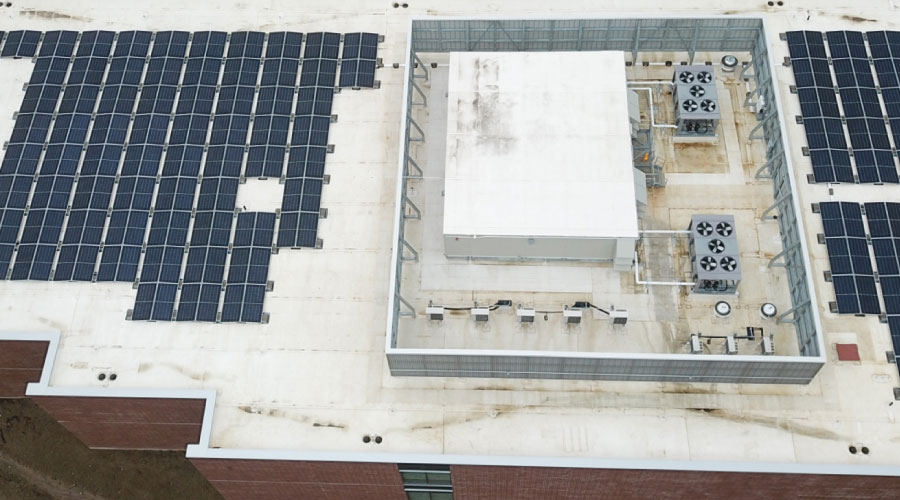
University of Pittsburgh Implements SolarEdge DC Solar Installations
The installation is estimated to offset abut 40 percent of its building’s total electricity use. August 11, 2023
The University of Pittsburgh is celebrating the installation of the first of several SolarEdge DC-optimized rooftop solar installations across multiple campuses. The 108-kilowatt system is installed on the George B. Duke Engineering and Information Technologies Building on the Pitt-Bradford campus in Bradford, Pennsylvania. Now operational, it is expected to produce 116,500 kilowatt-hours of electricity each year, offsetting approximately 40 percent of the building’s total electricity use.
The rooftop solar installation is a key part of the University’s goal to achieve Leadership in Energy and Environmental Design (LEED) certification for the Pitt-Bradford building, which serves as the campus hub for engineering, computing and energy studies. It will help to power the facility’s virtual reality lab, networking lab, makerspace, ample fabrication space, and engineering shops, all of which provide students with invaluable hands-on learning opportunities.
The solar system was designed and installed by Pittsburgh-based installer, EIS Solar. It chose SolarEdge’s DC-optimized inverter solution to overcome design challenges that would have otherwise significantly reduced the amount of energy the system could produce.
The Pitt-Bradford system is comprised of 200 bifacial modules which are installed in two separate arrays on either side of the penthouse. Each array is controlled by a SolarEdge inverter and uses SolarEdge Power Optimizers attached to each pair of modules to enable them to operate independently from others on the same string. This provided EIS Solar with the flexibility to position the modules in an east-west configuration and in uneven string lengths – crucial to maximize the number of modules that could be fitted onto the roof. The Power Optimizers bring additional production gains by mitigating power losses caused by module degradation and mismatch. The latter is especially common in bifacial modules due to the reduced surface albedo and irradiance differences on the rear side of the modules caused by their proximity to the roof.
Next
Read next on FacilitiesNet












